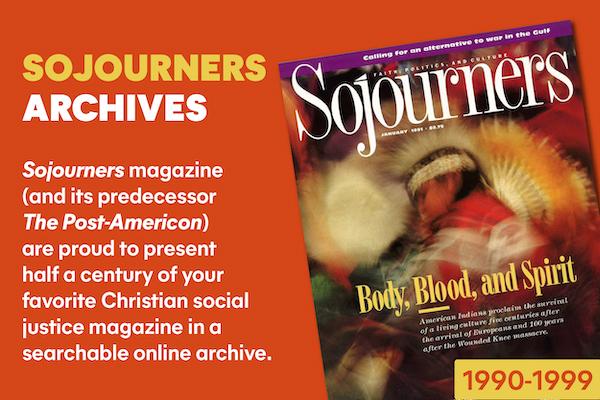In early December 1992, I made my second trip to Somalia to visit American Friends Service Committee (AFSC) staff and assess program needs. Though it was not planned this way, my arrival coincided with the launching of "Operation Restore Hope," the massive U.S. Marine-led intervention of more than 30,000 troops (28,000 U.S. and 2,000 from other nations) into Somalia, with the stated purpose of safeguarding the delivery of food and preventing further mass starvation. With anguish I watched the young soldiers in their gargantuan vehicles and at their installations surrounded by coils of unfriendly barbed wire, holding their weapons in tense readiness for action.
I was deeply distressed that the tragedy in Somalia had come to this. Images of starving Somali children on Western TV and in the press had cried out to the moral consciousness of the world, long after warnings of the impending disaster. With too little and too late, the United Nations had failed. Many relief agencies were pressing for stronger action.
Following the elections in November, then-President Bush announced the military operation, and another giant step was taken in the post-Cold War use of the military in humanitarian crises. Were there other alternatives?
The case of Baidoa is instructive. There, in the weeks before the United States made known its intervention plans, a delicate set of negotiated agreements among the factions in conflict had succeeded in creating a substantial, albeit fragile, measure of stability. Looting of food supplies was down to 5 percent, and the death rate had dropped significantly.
When the intervention was announced, the agreements fell apart, and rivals commenced a violent rampage to expand their turf before U.S. forces moved in. The stability that was achieved in Baidoa was a case of Somalis themselves working toward conflict resolution. Could the situation created in Baidoa have developed in other cities and areas? I believe it could have. If given the chance, Somalia's recovery would have developed deeper roots.
Restraint is not a trademark of our country's policies. Nor is the kind of effort it takes to connect with the work going on at the base of a particular society that has the potential to resolve conflicts and problems. Special U.N. Envoy Mohamed Sahnoun (fired in October) seemed to be in touch with some of this.
The "quick fix" approach of the military intervention was shortsighted and, in the long run, may indeed complicate the situation further. True, much food has been transported safely with military escort, and surely many lives have been affected. But long-term stability will remain elusive without solutions built from the ground up, and conflicts will likely resurface. Most of the guns have not been confiscated; weapons were buried or carried to the bush, and they are likely to reappear. The troops have killed many Somalis by unleashing massive firepower in response to violence.
AFSC staff have reported growing intolerance among Somalis of the military presence; continued attacks on relief organization compounds and against the military show growing resistance. Immediate and heavy firepower as a response to a violent situation leaves no room for negotiation. "This is not the Somali way," I have been told. Mohamed Abdirahman, AFSC Program Director, stated in his most recent reports in mid-January that the prevailing mood in Mogadishu is one of "insecurity." A relief worker explained in January, "Before, at least we knew where we could go; now, the insecurity is so bad that we can't go anywhere."
The use of a large military force in the Somalia context and the emphasis on negotiations with so-called "warlords" undermine the historic role of elders in the clan-based society. Thus the power of those with weapons is reinforced, while sectors of Somali society become spectators. For Somalia to recover its integrity, people at the base, in their communities and at the regional level, must participate in the remaking of their society.
The deeper problems of a society at war with itself (made especially bloody by sophisticated weaponry sent there in the '80s by the United States and the former Soviet Union) cannot be solved by military intervention. Gentle, patient, nonviolent efforts to achieve sustainable reconciliation must be supported. Strong-armed military approaches may only repeat past mistakes and carry on the cycle of violence.
David Funkhauser was the assistant coordinator of Africa programs for the American Friends Service Committee, overseeing work in Somalia and Mozambique, when this article appeared.

Got something to say about what you're reading? We value your feedback!
